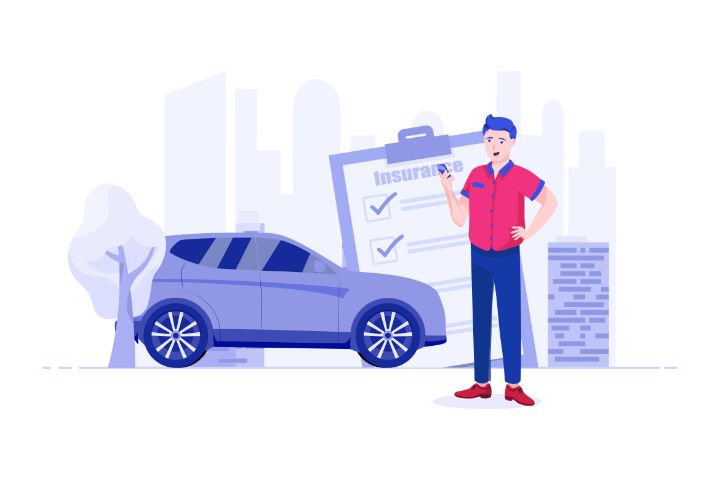Economic Impacts of Self Driving Cars
Introduction
In the next few decades, self-driving cars will become more accessible and affordable for the average consumer. They will be able to reduce congestion on highways and help cities develop their infrastructure. Travel may be safer for both humans and animals when it comes to collisions on the road. There will be a steep learning curve for drivers as they prepare to operate an autonomous vehicle.
Self-driving cars are expected to become more affordable and accessible in the next few decades.
A major benefit of self-driving cars is that they’ll be cheaper than human-controlled vehicles. The cost difference will be about $5,000 less per car, and it’s expected to come down as technology improves and more people start using them.
This means that even those who can’t afford a new car now may be able to buy one in the future when self-driving cars are more affordable.
The cost of an autonomous vehicle will likely be about $5,000 less than a car that a driver controls.
The cost of an autonomous vehicle will likely be about $5,000 less than a car that a driver controls.
There are several reasons for this:
- It’s safer. Self-driving cars have fewer accidents, which means fewer medical bills and insurance payments. They also require less maintenance because they’re not driven by humans–a big savings for you and me!
- It’s more efficient. You can spend your commute time reading or working on your laptop instead of being stuck in traffic jams caused by other people driving inefficiently (and unsafely). This could also save you money on gas if you normally drive long distances without using public transportation or ride-sharing services like Uber Pool or Lyft Line
Autonomous vehicles can help reduce congestion on highways and help cities develop their infrastructure.
Autonomous vehicles can help reduce congestion on highways and help cities develop their infrastructure.
Self-driving cars will allow for more efficient use of road space, because they will be able to follow each other much closer than humans are currently capable of doing. This means that there is less time spent between cars at intersections, which allows for faster travel times and fewer accidents overall. In addition, self-driving cars have the potential to greatly reduce the need for parking spaces in urban areas by allowing people to share rides with one another when it makes sense (like when two coworkers are going home at roughly the same time).
Autonomous vehicles will make travel safer for both humans and animals when it comes to collisions on the road.
When it comes to collisions on the road, self-driving cars are expected to make travel safer for both humans and animals. According to a recent study by the Insurance Institute for Highway Safety (IIHS), autonomous vehicles will reduce accidents by 90{a5ecc776959f091c949c169bc862f9277bcf9d85da7cccd96cab34960af80885} by 2030. This means that fewer people will be injured or killed in traffic accidents each year as well as less pollution from exhaust fumes generated by cars idling at intersections waiting for people in crosswalks, who may be distracted by their phones or pets running loose on sidewalks.
In addition to improving safety conditions for drivers and pedestrians alike, autonomous vehicles also promise economic benefits:
There will be a steep learning curve for drivers as they prepare to operate an autonomous vehicle.
There will be a steep learning curve for drivers as they prepare to operate an autonomous vehicle. Drivers must learn how to trust the car, use new technology and work with the car itself. Additionally, drivers will need to learn how to interact with other people on the road who are also driving autonomous vehicles.
Self driving cars will make driving safer and easier, but they will also impact many other industries like insurance, entertainment, etc…
Self-driving cars have the potential to be safer than human-controlled vehicles. They will be able to react more quickly and accurately, which means fewer accidents. This will impact industries like insurance, entertainment, and more.
- Insurance companies: The number one cause of car accidents today is human error–and those errors are often due to fatigue or distraction while driving. Self-driving cars can eliminate these factors entirely because they don’t get tired or bored like humans do (or get distracted by their phones). As such it’s expected that once self-driving technology becomes available in all vehicles on the road there will be fewer accidents overall which means less money spent on claims in general for insurers like State Farm Insurance Company ($45 billion annual revenue). Since premiums are calculated based on risk factors such as where you live or how much you drive this could mean lower rates overall if you use your vehicle less frequently since there’ll be fewer chances for something bad happening during those times when driving wasn’t necessary (such as commuting). In addition many people may choose not own cars at all if public transportation becomes readily available so this could result in even greater savings!
Conclusion
The future of autonomous vehicles is bright, but there are still many questions that need to be answered. For example, how will self-driving cars impact our economy?


